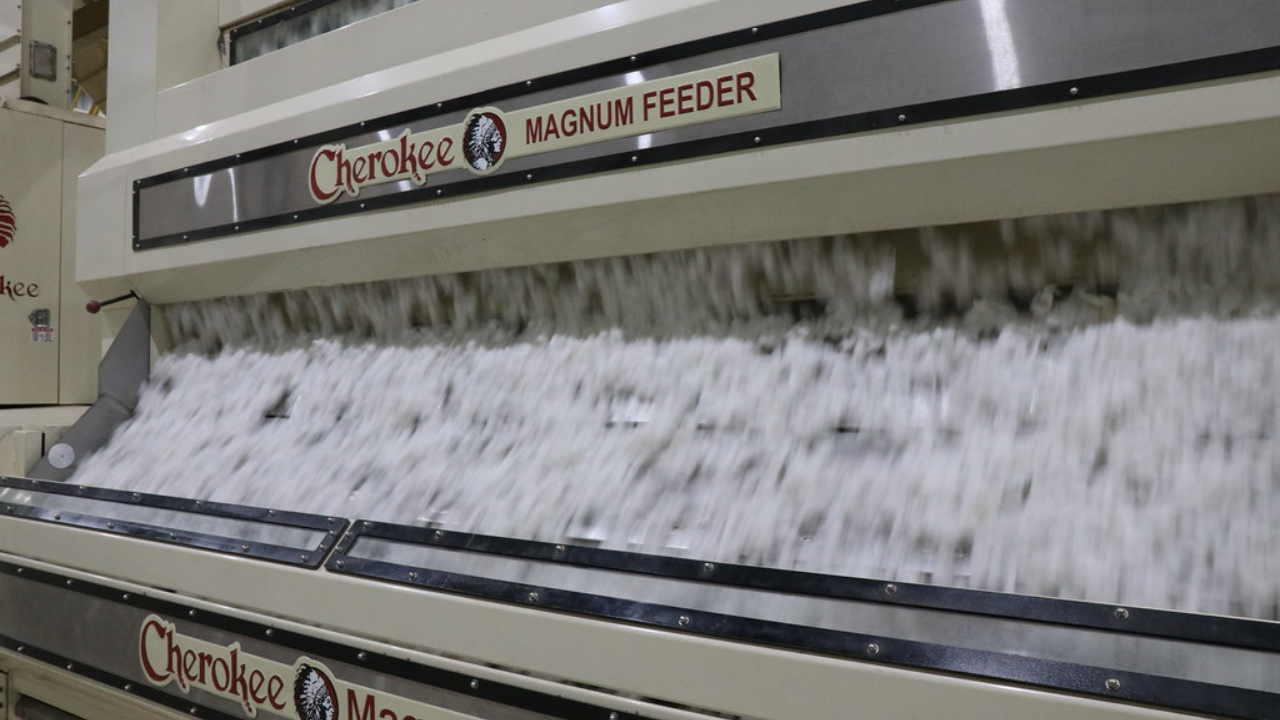A fierce battle is being waged between cotton and polyester, with polyester edging ahead as the most widely used fiber in the world, for now. In fact, synthetic materials account for more than half of today’s overall market share.
If cotton wants to remain viable in this competition, the industry must improve its fiber quality and uniformity, said Steve Hague, head of the College of Agriculture’s Department of Crop, Soil & Environmental Sciences and a researcher with the Alabama Agricultural Experiment Station.
“There are several competing factors in the struggle for positioning in the textile marketplace,” Hague said. “On one front is consumer preference, which is driven by fashion, comfort, utility and price. When cotton is cheap, like it is today, textile mills are more inclined to stick with cotton.”
“But when cotton becomes more expensive – particularly if petroleum prices remain stable, many mills shift to polyester. Polyester also offers greater consistency because each fiber can be created almost exactly the same. Cotton faces a strong competitor.”
While researchers can develop varieties and producers can grow cotton that is more uniform and stronger, it will never be on the level of polyester. However, cotton does have some advantages over polyester.
“For one, it’s a breathable fiber, so there is an inherent comfort factor,” Hague said. “In addition, polyester emits micro-plastics that are persistent in our environment. The more consumers learn about micro-plastics, the less appealing polyester will be.”
Also, there remains a lot of room for improving the uniformity and quality of U.S.-grown cotton.
Hague—who is a cotton breeder—is leading a team of researchers on a project that will enable U.S. cotton growers to take advantage of a new spinning technology, which will result in higher quality and more uniform cotton fiber.
In the 1990s, the first vortex spinning technology was released. While it was faster than the more traditional ring and rotor spinning, it also required a higher quality fiber that was finer, longer and more uniform than most of the U.S. cotton crop.
So, U.S. cotton hasn’t really been able to take advantage of vortex spinning—yet.
“The best quality fiber has traditionally been from ring spinning, which will use high-quality fibers and spin them into a high-quality yarn and consequently a high-quality fabric,” Hague said.
The research project also will use a more exact method of classifying cotton grades.
In the early 1990s, U.S. cotton finally moved away from subjective hand classification of cotton grades to the high-volume instrumentation (HVI) system. This was an important step for growers, merchants and textile mills to value cotton fiber quality in a more transparent system.
“Measuring a cotton sample with HVI is relatively inexpensive and very fast, usually less than 30 seconds,” Hague said. “While it does a good job grading cotton for length, strength, color and trash, it misses a lot of important traits related to spinning quality that are often left to interpretation by the textile mills.
“Among these are fiber length distribution, fineness, maturity and hairiness. These traits can have a profound effect on yarn quality, and cotton breeders know these traits are heritable.”
On the other hand, measures of cotton characteristics by AFIS (Advanced Fiber Information System)—which will be used in this project—analyzes various properties of individual cotton fibers, including length, maturity, fineness and trash content, using optical sensors. It provides detailed information about fiber quality that is crucial for optimizing spinning processes and ensuring consistent yarn production.
“It’s like the difference between looking at an object 100 yards away with the naked eye (HVI) versus using binoculars (AFIS),” Hague said.
The goals of Hague’s research are to determine optimal testing/selection environments for fiber quality.
“We will evaluate moderate and low-stress growing conditions for cotton plants to identify how the changes in conditions can affect the decision-making process within a breeding program based on changes in fiber quality as well as the effectiveness of SNP-based QTL markers in predicting the best genotypes for advancement,” he said.
SNP markers, or single nucleotide polymorphism markers, are specific locations in a DNA sequence where variations occur. These variations, where one nucleotide is replaced by another, are the most common type of genetic variation among individuals. SNP markers are valuable tools for genetic research and applications due to their abundance and ease of detection.
QTL markers, or quantitative trait locus markers, are specific DNA sequences used in genetics to identify regions of the genome associated with quantitative traits or traits that vary continuously, like size. These markers are crucial for understanding the genetic basis of complex traits and for marker-assisted selection in breeding programs.
“We aim to find SNP markers for QTLs related to fiber length distribution, elongation and fineness,” Hague said. “By focusing on these particular traits, we will enhance genetic rates of gain for traits that directly impact yarn quality. We also will explore relationships between selection environment and genotypes in regard to fiber quality.”
Researchers are testing two populations over multiple years, locations and production systems. This approach will help them explain key interactions that influence how well fiber quality can be predicted in breeding populations and environments.
Effective SNP markers, he said, could reduce the cost and improve the efficacy of selecting lines with improved fiber quality.
“We can choose parents to create populations with the genes related to enhanced fiber quality,” Hague said. “From these populations, we can then select progeny with the right array of genes for fiber quality. We can do all this without the outside noise of the influence of a particular growing condition.”
Hague hopes his project will enhance the current cotton breeding program at Auburn University.
“Jenny Koebernick—associate professor for cotton and soybean breeding in the Department of Crop, Soil & Environmental Sciences—has quickly established herself as one of the leading cotton breeders in the U.S.,” he said. “She has a major focus on developing cotton germplasm resistant to emerging diseases and insect pests. This project will supplement her existing program with tools to simultaneously enhance fiber quality.”





